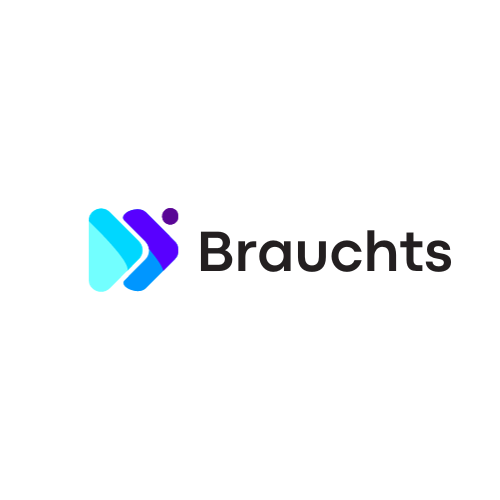
Investing can be a daunting prospect, especially for seniors who are approaching retirement or are already in their golden years. One investment option that often garners attention is the Gold Individual Retirement Account (IRA). But is a Gold IRA the best choice for senior citizens who may be less familiar with investing? In this article, we will break down the basics of a Gold IRA, discuss its advantages and disadvantages, and help you make an informed decision.
Understanding the Basics
Before we delve into the specifics, let’s start with the basics. An IRA, or Individual Retirement Account, is a tax-advantaged savings account designed to help individuals save for retirement. Traditional IRAs and Roth IRAs are more common, but a Gold IRA is a unique type that allows you to invest in physical gold, silver, platinum, or palladium.
Advantages of a Gold IRA
- Diversification: One of the primary advantages of a Gold IRA is diversification. Diversifying your retirement portfolio means spreading your investments across different asset classes to reduce risk. Gold, historically, has had a low correlation with stocks and bonds, making it a valuable addition to a retirement portfolio.
- Hedge Against Inflation: Gold has been a reliable hedge against inflation. When the purchasing power of your money declines due to inflation, the value of gold often rises. This can help preserve your wealth and purchasing power during retirement.
- Tangible Asset: Unlike stocks or bonds, physical gold is a tangible asset. You can hold it in your hands, and it doesn’t rely on the performance of a company or government. This can provide a sense of security, especially during economic uncertainties.
- Tax Benefits: Like traditional IRAs, Gold IRAs offer tax advantages. Depending on the type of Gold IRA you choose, contributions may be tax-deductible, and gains can grow tax-deferred or even tax-free.
Disadvantages of a Gold IRA
- Storage and Costs: Storing physical gold can be expensive and may involve fees for secure storage facilities. These costs can eat into your returns, so it’s essential to factor them into your investment decision.
- Volatility: While gold is seen as a safe haven asset, its price can be volatile. It doesn’t provide a guaranteed income stream like some other retirement investments, such as annuities or bonds.
- Limited Growth Potential: Gold’s long-term growth potential may not be as high as that of stocks or other riskier assets. This means you may miss out on potential gains by allocating a significant portion of your retirement savings to gold.
- Lack of Income: Unlike dividend-paying stocks or bonds, gold doesn’t generate income. If you rely on your investments for regular income during retirement, this could be a drawback.
Now that we have gone over the gold IRA pros and cons, let’s continue to learn more about these unique accounts.
Is a Gold IRA Right for You?
Deciding whether a Gold IRA is the best investment for you as a senior citizen depends on your individual financial goals, risk tolerance, and retirement timeline. Here are a few key considerations:
- Diversification: If you already have a diversified retirement portfolio, adding a small percentage of gold could enhance your diversification.
- Risk Tolerance: Consider your comfort with market volatility. Gold can be a stabilizing factor in a portfolio, but it can also experience price swings.
- Time Horizon: Your age and how long you plan to keep your investments can affect your decision. The longer your time horizon, the more potential there is for gold to benefit your portfolio.
- Consult a Financial Advisor: It’s essential to consult a financial advisor who can assess your individual circumstances and help you make an informed decision that aligns with your retirement goals.
How to Convert Your IRA to a Gold IRA
If you’re interested in diversifying your retirement portfolio by moving an existing Individual Retirement Account (IRA) to a Gold IRA, you can transfer your IRA to gold through a process called a “rollover” or a “transfer.” Here’s a step-by-step guide on how to make this transition:
Research and Choose a Custodian:
Before proceeding, you need to select a reputable custodian or trustee for your Gold IRA. Not all financial institutions offer Gold IRAs, so it’s crucial to research and find one that specializes in precious metals. Ensure that the custodian is approved by the IRS to handle such transactions.
Open a Gold IRA Account:
Once you’ve chosen a custodian, contact them to open a Gold IRA account. This will involve filling out paperwork, providing necessary identification, and agreeing to the terms and conditions of the account.
Fund Your Gold IRA:
There are two primary methods to fund your new Gold IRA:
Direct Transfer: In a direct transfer, the funds from your existing IRA are moved directly to the Gold IRA custodian. This method is not considered a distribution, so it doesn’t trigger taxes or penalties. The custodian will assist you in initiating the transfer, which typically involves paperwork to be completed by both custodians.
60-Day Rollover: In this method, you request a distribution from your existing IRA, and then you have 60 days to deposit the funds into your new Gold IRA. If you miss this deadline, the IRS may consider it a taxable distribution, subject to penalties and taxes. It’s important to be cautious with this option to avoid unintentional tax consequences.
Choose Your Precious Metals:
Your Gold IRA custodian will have guidelines regarding the types of precious metals you can hold in your account. They can help you select suitable gold, silver, platinum, or palladium coins or bars that meet IRS requirements.
Storage and Fees:
Your chosen custodian will provide secure storage for your precious metals. Be aware of any storage fees associated with your Gold IRA, as they can vary among custodians. These fees may include storage, insurance, and administrative charges.
Review and Monitor Your Investment:
Once your Gold IRA is funded and established, keep a close eye on your investment. Precious metals can be subject to price fluctuations, so regular monitoring is advisable. Consider consulting with a financial advisor to ensure that your overall retirement portfolio remains aligned with your financial goals.
IRS Reporting:
It’s essential to maintain accurate records of your Gold IRA transactions for tax purposes. The custodian will provide annual statements and report any required information to the IRS.
Conclusion
While a Gold IRA can be a valuable addition to a retirement portfolio, it’s not a one-size-fits-all solution. Senior citizens considering this investment option should weigh the pros and cons carefully, taking into account their financial situation, risk tolerance, and retirement goals. Consulting with a financial advisor can provide the guidance needed to make an informed decision. Ultimately, the best investment for a senior citizen depends on their unique circumstances and objectives.
